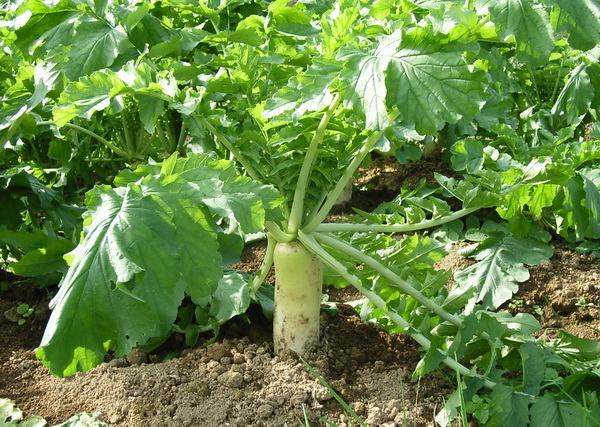Project Report For Radish Farming
Introduction
Project report for radish farming is as follows.
Radish is a popular root vegetable that is widely grown in India and around the world. It is a fast-growing, annual plant that belongs to the family Brassicaceae, which also includes vegetables such as broccoli, cabbage, and mustard.
Radishes are usually grown for their edible roots, which are usually eaten raw in salads or as garnish. They are also sometimes cooked or pickled. Radishes are a good source of nutrients, including vitamin C, folate, and potassium.
Radish is a hardy and fast-growing crop that can be grown in a variety of soil types, but it prefers well-draining, fertile soil with a pH between 6.0 and 6.8. It can tolerate a wide range of temperatures, but it grows best in cool to moderate temperatures. In India, radish is commonly grown in the states of Punjab, Haryana, Uttar Pradesh, Bihar, West Bengal, and Assam.

Radishes are a highly nutritious crop that is rich in vitamin C, folate, and potassium. They are also low in calories and are a good source of dietary fiber. In India, radishes are commonly consumed fresh, either raw or cooked, and are used in a variety of dishes such as salads, sandwiches, and soups. They are also pickled and used as a condiment.
Radish farming in India is typically done on a small scale, with farmers cultivating the crop in small plots of land using traditional methods. The most common variety of radishes grown in India is the red radish, which is characterized by its elongated, cylindrical shape and reddish skin. Other varieties of radish that are grown in India include the white radish and the black radish.
Get Completely Custom Bankable Project Report
The cultivation of radishes in India begins with the preparation of the soil, which should be well-draining and fertile. The soil should be loosened and weeds should be removed before planting. Radish seeds are usually sown directly in the soil, although they can also be grown from seedlings. The seeds should be sown in rows, spaced about 2 inches apart, and covered with a thin layer of soil.
After planting, the radish crop requires regular watering to ensure proper growth and development. The plants should be watered deeply at least once a week, and more frequently during hot, dry weather. Radishes are also sensitive to pests and diseases, so farmers may need to use pesticides and other control measures to protect their crops.
Market Potential Of Radish Farming
The size of the global microgreens market, which was estimated to be worth $1.3 billion in 2019, is expected to increase to $2.2 billion by 2028, with a CAGR of 11.1% between 2021 and 2028.
Expenses

Product Cost Breakup

Reveneue Vs Expenses

Market Trend

One potential market for radish farming in India is the retail sector, as radishes are sold fresh in markets and supermarkets throughout the country. Farmers can also sell their radishes to wholesale buyers, such as restaurants and food processors, who may use them in a variety of dishes and products. In addition, radish farmers can consider processing and packaging their radishes for export to other countries, as India has a well-established export market for a variety of fresh and processed vegetables.
Radishes are a popular vegetable in India, and the market potential for radish farming in the country is significant. Here are some key points to consider when evaluating the market potential for radish farming in India:
- Demand: Radishes are a staple in many Indian dishes, and the demand for radishes in the country is high. Radishes are also used in the production of traditional Indian pickles, which are popular throughout the country.
- Production: India is one of the leading producers of radishes in the world, with the majority of production concentrated in the states of Uttar Pradesh, Bihar, and West Bengal. Radish farming in India is primarily done using traditional techniques, with farmers relying on natural fertilizers and irrigation methods.
- Export potential: India exports a significant quantity of radishes to countries around the world, including the United Arab Emirates, Saudi Arabia, and Oman. There is potential to expand exports to other countries, particularly in the Middle East and Southeast Asia, where demand for Indian radishes is high.
- Market trends: The demand for fresh, locally-grown vegetables is on the rise in India, and radishes are no exception. Consumers are increasingly looking for high-quality, locally-grown produce, and this trend presents an opportunity for radish farmers in the country.
Overall, the market potential for radish farming in India is strong, with high demand for vegetables and significant export potential. While there are challenges to overcome, there are also many opportunities for radish farmers in the country to capitalize on this growing market.
